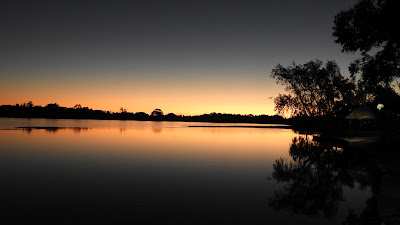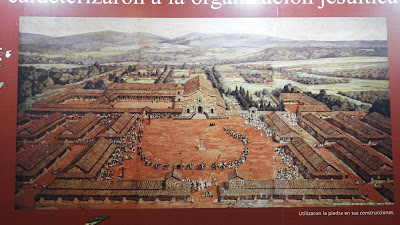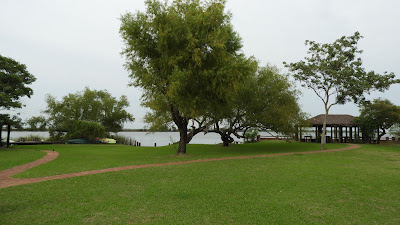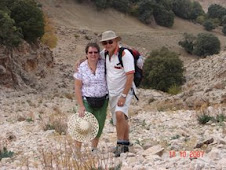Almost 5 years ago we visited Niagara Falls not long after setting off from New York and a few days ago we visited Iguazu a couple of weeks before completing this incredible journey. And in the middle we visited Gocta Falls, 3rd highest, probably the remotest and least visited waterfall in the world, and by far our favourite. Iguazu is pretty amazing, but very touristy.
We saw a vast array of animals on our travels, the most recent and by far the most surprising was a rat the size of a sheep!?!?!
After holding back on the north western side of Argentina waiting for the storms in the west to clear, we caught the weather just right, have had no rain at all and it is still incredibly hot. We had been watching the weather at Iguazu for the whole trip and it continually forecast rain and thunderstorms, but all that cleared and it was blue skies and sunshine whilst we were there. The only downside was that there was so much spray coming up from the biggest falls it was hardly possible to see anything, but Iguazu is a collection of many waterfalls at different levels, with a number of different walkways at various levels so the views are spectacular.
We decided against going into Paraguay, other than being able to say we had visited another country there was nothing much that inspired us to go, there are only 2 crossings between Argentina and Paraguay and both sounded like they would be a hassle (queueing up with loads of Argentinians crossing to things that are not are either not available or a lot more expensive in Argentina) and we had already decided not to go into Brazil for the same reasons. Also many people (including Brazilians) that had been to both sides said that Iguazu on the Argentinian side was far better so was not worth going into Brazil.
Maybe we will go to Brazil one day, but by a different means of transport!
So, now we are in Uruguay and the intention was to do a quick circuit of the country to finish off with, but we are currently in a camp site with some thermal pools and we have just about ground to a holt.
We had a major blow out a few days ago on a gravel road, we must have hit a very sharp jagged rock as it went straight down and has destroyed the tyre, the cut across the tread is too big to patch properly and I cannot get the same make here, we still have one good spare but 2 of the rims are cracked with a tubes in it and apparently most of the east/west roads across Uruguay are in a pretty poor state and we don't want to risk any further wheel/tyre issues this late in the game.
The plan now is to park the truck, go home then will seriously look at shipping to Africa for the next adventure.
 |
| Driving across Argentina we came across this gorgeous camp site on the side of a Lake. Whilst we were there we met a guide from the nearby park that persuaded us to visit it. |
 |
| Chris, are you sure this is the right way? |
 |
| Then we come across our first Capybarra, the largest rat in the world (the size of a sheep), that only lives in the wetlands of Argentina. |
 |
| After that we see lots of them. |
 |
| They spend that much time in water they have webbed feet. |
 |
| Camped in a camp site at the wardens station in the middle of the park. |
 |
| They are very tame and quite lazy and this one just did not want to move out of the way! |
 |
| Little ones scuttling out of the way as we crawl past. |
 |
| On the way up to Iguazu we stop off at a couple of Jesuit Missions, but this was the only decent picture I could get. What they accomplished was very interesting but most of the buildings were destroyed in the wars between Paraguay, Brazil and Argentina. |
 |
| This was the general layout of a Jesuit Mission founded in 1696 to house and protect the local Guarani population from slavers. The Guarani culture was interwoven with Spanish and the Jesuits earned the Guarani language so that he could spreak to the Guarani in their own language. At its peak each mission would house up to 4,000 Guarani with quite a number of missions spread over Argentina, Paraguay and Brazil at that time housing over 100,000 Guarani. This continued until 1767 when the Jesuits were expelled from Spanish domains (following similar expulsions by French and Portuguese authorities) after which the missions fell into decline and were mostly completely destroyed in the wars of the early 19th century. |
 |
| One of the birds we came across walking up to the falls. |
 |
| Fist sight of Iguazu. |
 |
| It was hardly possible to see anything at the biggest of the falls due to the spray. |
 |
| But further down you could get a better view. |
 |
| The falls seem to go on for miles. |
 |
| These were wandering about, mainly trying to steal food, they have different names in different countries (we saw them in Costa Rica) but for the life of me I can't remember any of them. They also warned of monkeys, but we did not see any! |
 |
| After Iguazu we went back south and stayed in another area of wetland park and stayed at this site for a couple of days to do a wetland boat tour. The grass on this quite quite large site was kept short by a large family of capybarras that appeared from the wetlands as the sun went down and munched round the site over night. I woke up at around 5.30 one morning to a munching sound and looked out to see two of them right under the tent. |
 |
| A couple of Kingfishers. |
 |
| Another Capybarra |
 |
| Can't remember the name but these birds were huge and carefully guarding their last chick of 4, the others had been taken by Caymen. |
 |
| The culprit! |
 |
| A Marsh Deer. |
 |
| The camp site we are in now has a couple of very tame foxes on the alert for anything going. |
 |
| It also has 2 exceptional thermal swimming pools one at 30 degrees and the other at 40 degrees |
 |
| We had a bit of rain last night and was cloudy this morning, but the sun is back now and around 22 degrees, a little cooler than it has been, but at times it has been too hot, so now it is perfect and Chris is here enjoying the hot pool with a French family. |
